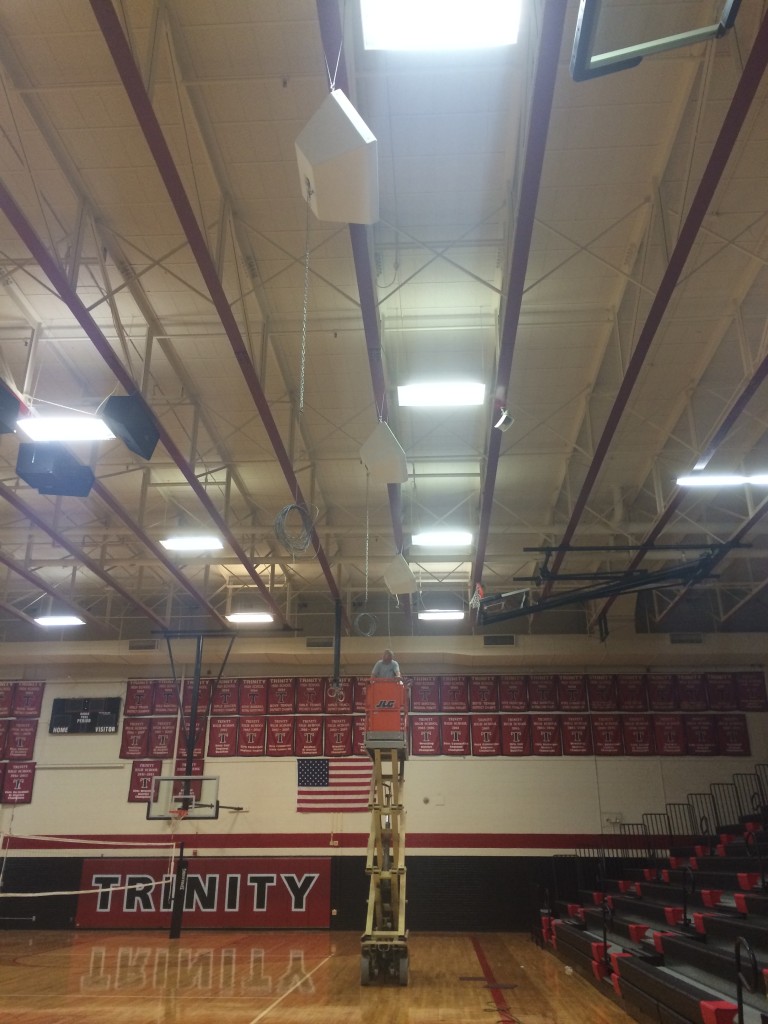Years ago I helped a school replace it’s mono center cluster with some self powered QSC KW122 speakers configured as a R / L / R / L system.
The center of the old cluster was a JBL AS4735NW 3 way speaker. The NW has a passive crossover which allows it to be powered from a single amp channel whereas the STD version must be biamped.
JBL 4735 – spec sheet PDF
JBL 4735 – service manual PDF
The AS “architecture Series” is the install version (without handles but with rigging points). The same basic design is also available in the SR series is the portable version. In this case the SR cabinet is called an SR4735
JBL SR4735 – service manual PDF
Here is a product
JBL – SR series brochure
When it was taken down, it was put into storage and forgotten. Last year I tested it and discovered there was something wrong in the mid range. It went back into storage until today when I dragged it out again and remeasured it. When configured for passive crossover use, the cross over frequencies are 600hz and 2800hz. When configured for biamp use, you feed the LF 15″ driver directly an the MF / HF passive crossover covers that frequency transition.
Here is what the cabinet measures like AS IS.
This is a measurement with the LF driver unplugged
This is a measurement with the LF & MF driver unplugged (HF only)
This is a measurement with the MF driver unplugged (LF & HF)
In removing the 8″ MF driver, I discovered a few things. First, it’s housed in a sealed box inside the cabinet. Secondly, the paper cone has broken almost completely loose from the piston which explains why most of the mid range are mostly absent but not completely absent.
Having done some recent measuring at a venue with some passive 3 way cabinets (separate amp for each speaker & separate processing) and realizing how little I understand about how to configure an active crossover (analog or digital), I thought that once this JBL AS4735NW is @ 100% again, I can do some modifications to it to make it possible to easily turn the (3) speakers on and off externally. Also to choose between the passive crossover and an active (3) way setup. It will require some switches and rewiring but should make it possible to quickly test and understand what does what. How does a 3 way speaker behave and measure when the (3) drivers are in polarity and out of polarity? How does changing the crossover frequencies affect the sound of the loudspeaker?
My hope is that once I have seen how everything works in a controlled environment and I understand what to expect when things are wired correctly and incorrectly, I will be better prepared to recognize the same attributes in the field. If I need to verify a speaker after replacing drivers or discover something strange, it would be helpful to know that I’m on the right track and not chasing my tail.
If you can’t tell what is what working with a 2 way passive box, there is little hope of managing a 3 way active rig. I’m still in the “lots of questions” category of understanding a 2 way passive box.















